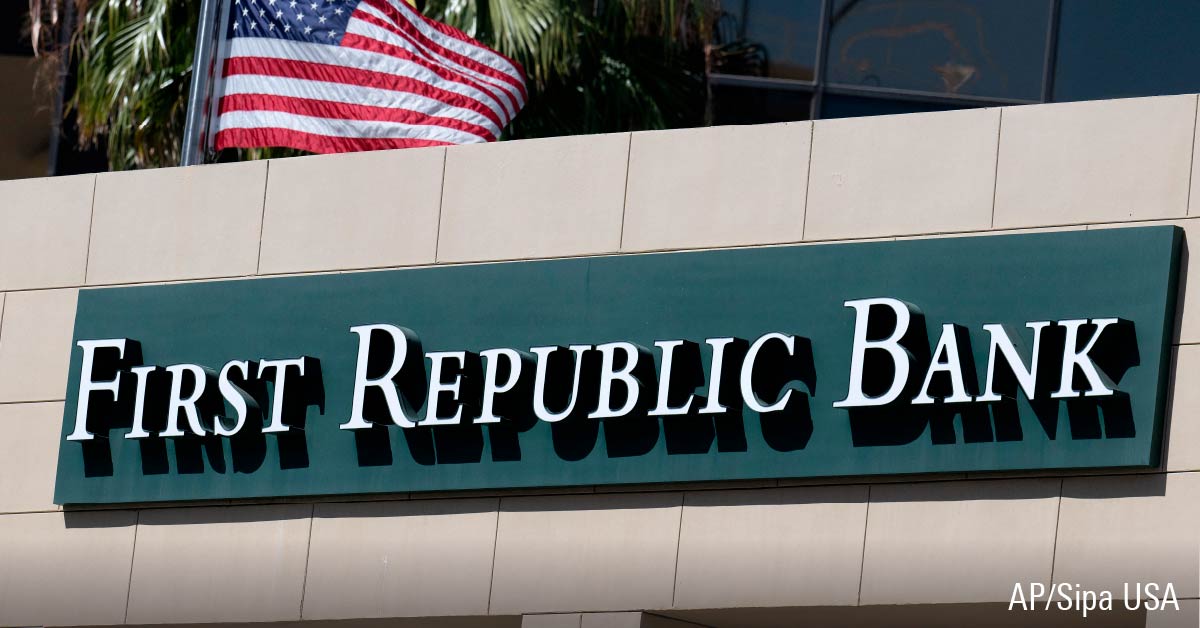
What began as a crisis for a mid-size regional bank in the U.S. quickly caused chaos across global markets. When Silicon Valley Bank collapsed and the FDIC took control of its business, regional bank stocks across the U.S., such as Signature Bank and First Republic Bank, also plummeted. The mess soon spread to Europe, as shares of Switzerland’s Credit Suisse dove to a record low. Federal regulators on both continents acted quickly to mitigate the crisis and insure access to deposits, but the losses incurred across the financial sector could not be reversed.
Canadian Bank Stocks Also Fell…
Given all of this tumult, investors may be quick to dismiss bank stocks as too risky. Indeed, the Morningstar Developed Markets Financial Services Index, a collection of bank and financial stocks from across all developed markets, has lost 1.07% YTD in Canadian dollar terms, having declined 7.09% so far in March alone. However, volatile market conditions often present investors with valuable buying opportunities, since many stocks are trading well below their fair value estimates. Shares of Canada’s Big Six banks, considered the most systemically important banks of the Canadian economy, have each dipped lower since the onset of the crisis.
Canadian Imperial Bank of Commerce (CM), The Toronto Dominion Bank (TD), Bank of Nova Scotia (BNS), Bank of Montreal (BMO) and National Bank of Canada (NA) were all considered undervalued as of March 22, earning a Morningstar Rating of four stars or more. Royal Bank of Canada (RY) was fairly valued at $129.78 per share. Each of these banks earn a Morningstar Economic Moat Rating, meaning they benefit from a strong competitive advantage in the financial sector. Diverse business lines and geographically specific markets set each of Canada’s Big Six banks apart from each other.
…But Canadian Banks Are Not At Risk
DBRS Morningstar authors Carl De Souza, Josh Veenkamp, and Michael Driscoll explain that “the risk of a bank run is somewhat lower in Canada compared with the U.S. because there are significantly fewer banks in Canada (85 Canada Deposit and Insurance Corporation (CDIC) member institutions compared to more than 4,700 Federal Deposit Insurance Corporation-insured institutions).” They also note that “Canadian banks have a relatively broad base of clients, particularly the Big Six, and do not have highly concentrated exposures to riskier industries susceptible to boom and bust periods such as technology, or even oil and gas.”
One of the main drivers behind SVB’s collapse was an investment portfolio overweight in long-term fixed-income. Canadian banks generally have lower exposure to this asset class, the DBRS authors note, which indicates their relative stability. “Diversified and stable funding, sufficient liquidity, prudent risk/liquidity management, and capital buffers should enable the Big Six to navigate current market turbulence.”
In Turbulent Times, Look for Quality Leadership
Morningstar’s Capital Allocation Rating considers each of these three factions, which are largely controlled by a firm’s management and speak to a company’s long-term stability and value:
- Balance sheet,
- Investments, and
- Shareholder distributions.
Stocks with an Exemplary Capital Allocation Rating are expected to perform exceptionally well by maintaining steady distributions and sound debt/asset ratios.
Few banks have avoided the recent turmoil entirely. However, the firms whose stock price managed to weather the crisis particularly well stand out for their superb financials and durable ability to fend off competition. Indeed, the 13 stocks in Morningstar’s Developed Markets Financial Services Index with Exemplary Capital Allocation and Wide Economic Moat ratings have returned, on average, 6.84% YTD in Canadian dollar terms. In comparison, the broader index declined 1.07%.
One Canadian Bank Stocks Has a Wide Economic Moat, and is Undervalued
The global downturn in the financial sector presents a unique opportunity for Canadian investors to find highly rated bank stocks trading at a discount. The Toronto Dominion Bank (TD) is the only stock among Canada’s Big Six that earns both the Wide Economic Moat and Exemplary Capital Allocation ratings and is currently undervalued.
“Toronto-Dominion is one of the two largest banks in Canada by assets and one of six that collectively hold roughly 90% of the nation's banking deposits. The bank derives approximately 55% of its revenue from Canada and 35% from the United States, with the rest from other countries. The bank also has number-two market share for business banking in Canada. With over $400 billion in Canadian assets under management and top-three dealer status in Canada, and being the number-one card issuer in Canada, Toronto-Dominion should remain one of the dominant Canadian banks for years to come.
“In our view, Toronto-Dominion has a wide moat because it has superior market share in the advantageous Canadian banking environment, a better deposit mix, and exposures to moaty nonbank businesses.
We give Toronto-Dominion an Exemplary capital allocation rating. In our opinion, the company’s balance sheet is sound, its capital investment decisions are exemplary, and its capital return strategy is appropriate. TD is well capitalized, with a common equity Tier 1 ratio consistently above the 11% minimum. We view the company's capital investments as exemplary, as the bank has avoided value-destroying products and expansions while pursuing sensible investments and growth opportunities, allowing it to build up one of the most highly profitable Canadian banking franchises. We assess the company’s capital return strategy as appropriate; it is largely in line with peers', with a healthy focus on a dividend and some additional earnings left over for repurchases after internal investments.”
-Equity Analyst Eric Compton





















